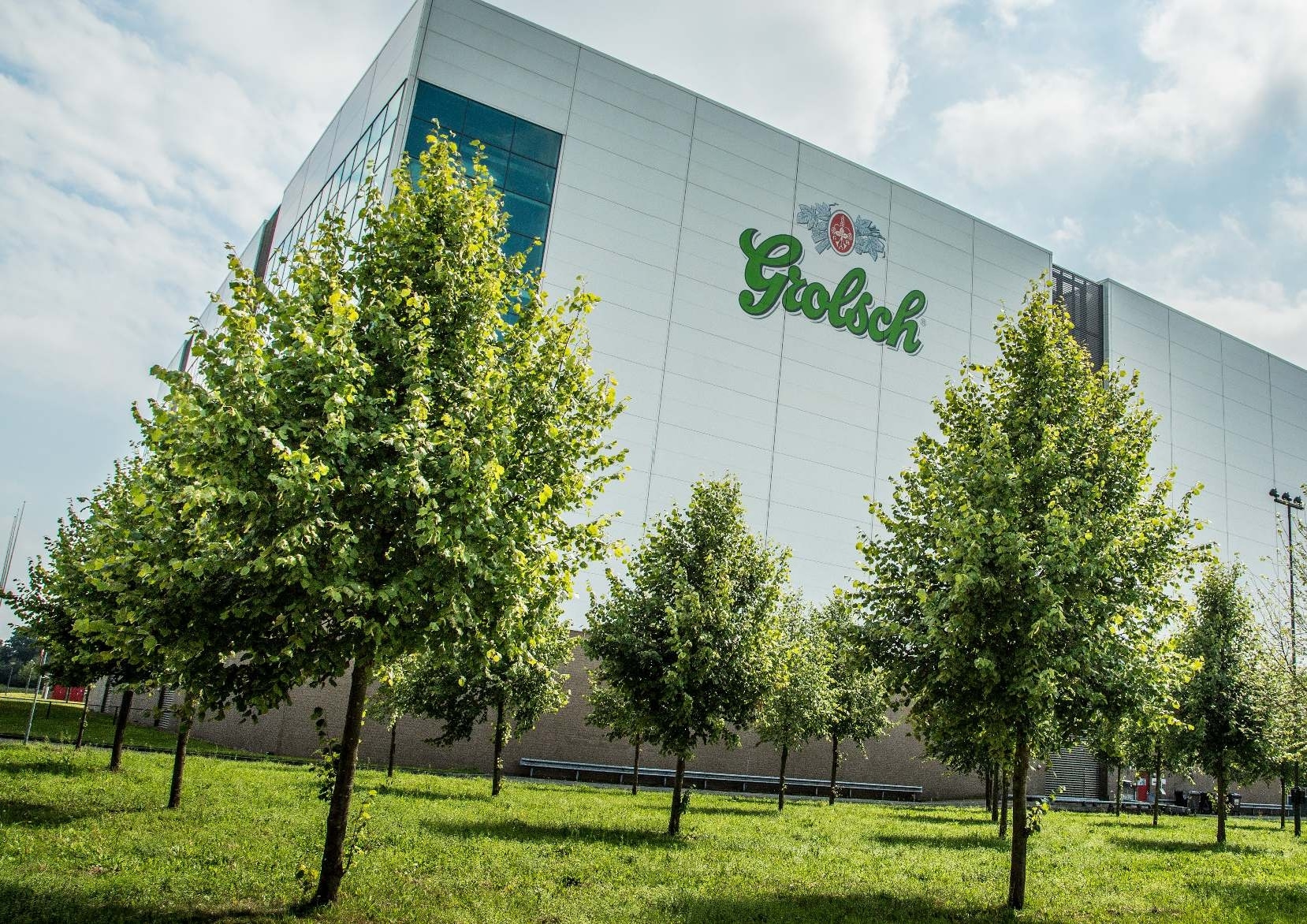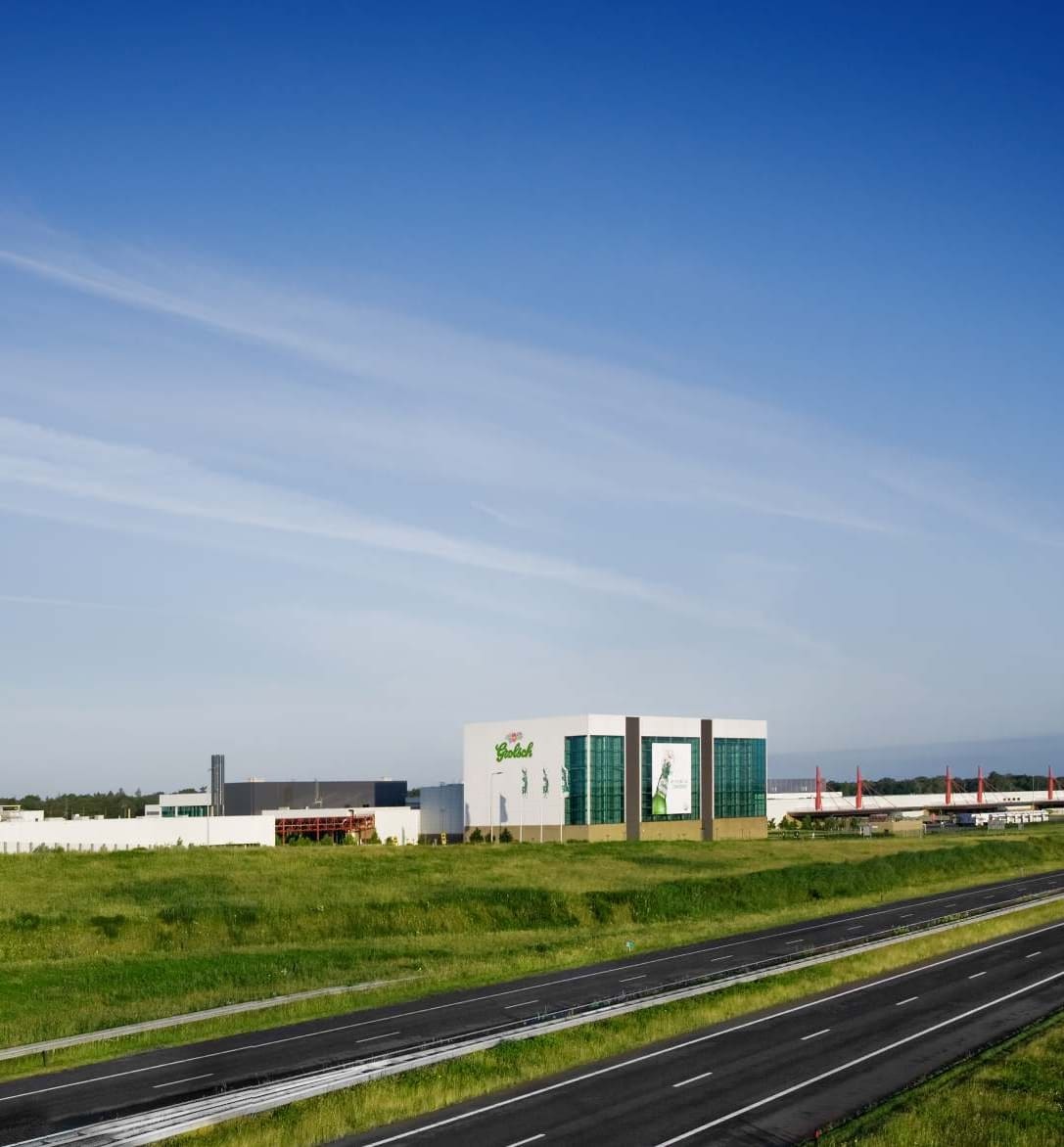Royal Grolsch
Grolsch is getting greener
Royal Grolsch has always been strongly connected to the East Netherlands, with its origins in the Achterhoek and current location in Twente. The ell water is still extracted from wells in Enschede and Hengelo and there are numerous initiatives with regional companies and institutions regarding sustainability in the broadest sense of the word. Grolsch will continue to strengthen its relationship with this region in the future.
In addition to the focus on the environment, people and society are playing an increasingly important role within Grolsch’s sustainability strategy. Susan Ladrak, Sustainability Manager at Grolsch, confirms their commitment to a sustainable living environment: “Besides the sustainable, responsible character of the brewery, the social aspect for the region is an important focus area for Grolsch. With the Grolsch Vakmanschap is Meesterschap Fund, we support projects, initiatives and associations in the region with a focus both on innovation and sustainability as well as on entrepreneurship.” Every year, various initiatives are supported to promote the social and economic growth of the region, in which sustainability plays a central role. Sustainability is something that Grolsch also implements in its organisation by focusing on securing the availability of water and reducing its use, maximising reused material, and reducing CO2 emissions of the brewery and throughout the entire value chain.
Packaging
Last year, Grolsch implemented various innovations to reduce the use of plastic. An example of this is visible to the end-consumer, too: the use of TopClips. Susan Ladrak:
“By not wrapping the six-packs entirely in plastic, but placing a cardboard holder over the top of the cans, we have achieved a significant reduction in the use of plastic.”
In applications for which replacing plastic is difficult, Grolsch works with reused materials as much as possible.
“For plastic films around the pallets or trays with cans, we try to use as little virgin material as possible and focus on using recycled plastic.”

Energy transition
In addition to the visible changes, they are also working on less visible reductions. For example, Royal Grolsch has set the goal of only using sustainable fuels in the brewery by 2025. This energy transition plan consists of several phases. The first phase was realised in 2020, using green electricity. The plan’s second phase came into effect this year, obtaining the permits around heating from Twence. As a result, Grolsch will use three million Nm3 less natural gas per year from 2023, and the brewery will save around 5500 tons of CO2 emissions per year.
The hot water pipe that is now being built between Twence and the Grolsch brewery will be connected to an existing hot water pipe from Ennatuurlijk. The hot water from Twence will pass through a heat exchanger at Grolsch. The heat from that hot water is then used to heat Grolsch’s own hot water system. In this way, natural gas is no longer needed to generate the heat required, for activities such as pasteurizing, rinsing the bottles, and warming the building. However, natural gas remains necessary to produce steam – which is used to boil the wort. Ladrak said:
“In 2023, we’ll conduct an extensive study to see how we can convert our last bit of natural gas into a sustainable fuel so that we’re completely off the natural gas by 2025.”
The importance of water
The primary role that water plays within Grolsch’s sustainability strategy has to do with the future. Due to climate change, we are increasingly confronted with periods of drought. The long-term expectation is that there may be a shortage of water in the Netherlands, so that the available water may not always be sufficient to supply the brewery with water.” At Grolsch, they investigate whether they can reuse part of the used water as process water so that less fresh water needs to be extracted from the wells. In addition, Grolsch is working on more efficient use of raw materials to reduce the amount of water required: “Grolsch has started brewing more beer, which means that more water is needed. However, we have started to produce more efficiently, which means that we need less water per litre of beer.” Although Grolsch has wells in Enschede and Hengelo, not all that water is used for brewing beer.
“The water that ends up in the beer comes from our wells in Enschede. The water from the wells in Hengelo is mainly used as process water, for example in the bottle rinsing machines, pasteurisers and it evaporates on the condensers.”
About 80% of the pollution is filtered out of the water in our own water treatment plant. The effluent then goes, by pipe, to the municipal water treatment plant that further purifies the water. “The idea now is to investigate whether we can purify part of the water that is sent back to the municipal water treatment plant ourselves. By adding several extra purification steps to our process, we may get the water back at such a specification that we can reuse it again as process water in the brewery. This could save a huge amount of water because if you need less fresh water at the front, you ensure that you can always use fresh water.” However, we do not have to worry that the beer will taste different.
“We will continue brewing the beer with the water we get from our wells. The water in our beer will always be the water we pump from our wells.”

Transport
In addition to making production and packaging more sustainable, logistics are also being looked at by the company. Grolsch aims to reduce CO2 emissions from transport by 30% by 2030 to eventually be completely CO2 neutral throughout the entire chain by 2050. “An ambitious goal,” Ladrak said. “Transport is very complex. It is about the products we transport within the Netherlands and across the borders to America and Asia. In the Netherlands, most transport is truck transport. Last year we did tests with the use of HVO biodiesel. From January next year, in collaboration with Lean and Green, we will also look at how we can make pallet transport more sustainable.” For export transport, the container terminal in Hengelo is already widely used. Trucks drive from the brewery to Hengelo, after which the containers are shipped to Rotterdam by boat. This has a positive effect on truck movement and emissions within the Netherlands. After all, all beer that is transported by boat on inland waterways does not have to be transported by road.”
Innovations
“Our core activity is brewing beer and bringing it to market. Nevertheless, we are always looking for processes to optimise this and make it more sustainable. “With the University of Twente in the backyard and Saxion University of Applied Sciences in the front garden, there is sufficient knowledge in the area to support this.
“The next step we want to take is to predict the amount of water and energy that will be used for a certain process in a certain period so that the delivered volumes and performance can be weighed.”
Grolsch is also working on a plan with AmperaPark to cover the parking lot with solar panels to generate green electricity. NXFiltration was also investigated whether the pumped-up well water can be obtained to the proper specifications using membrane technology. Alike this, numerous projects have been started to reduce water use and achieve the objectives for the coming years.